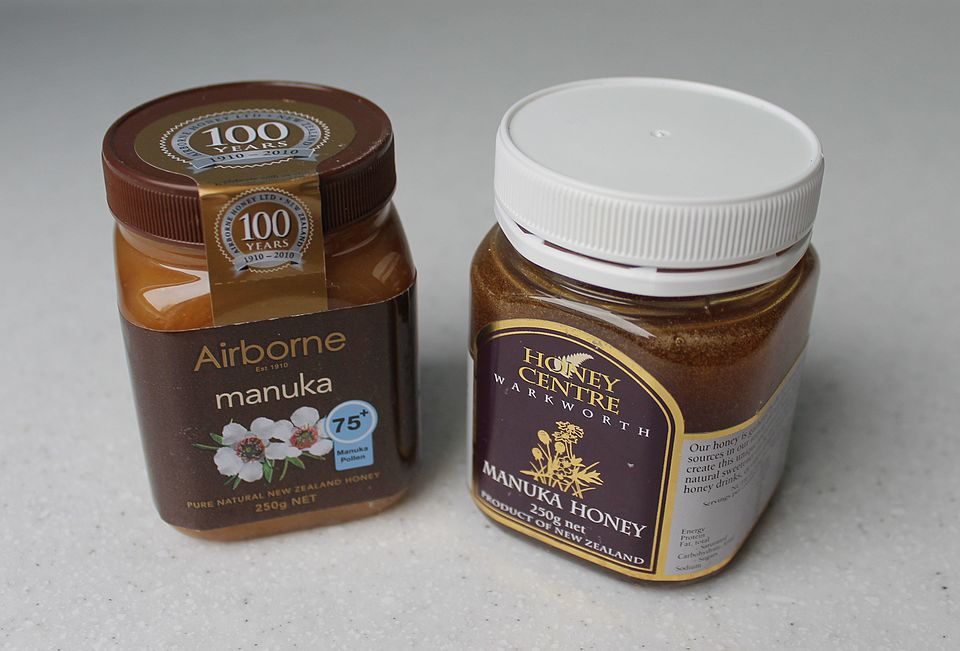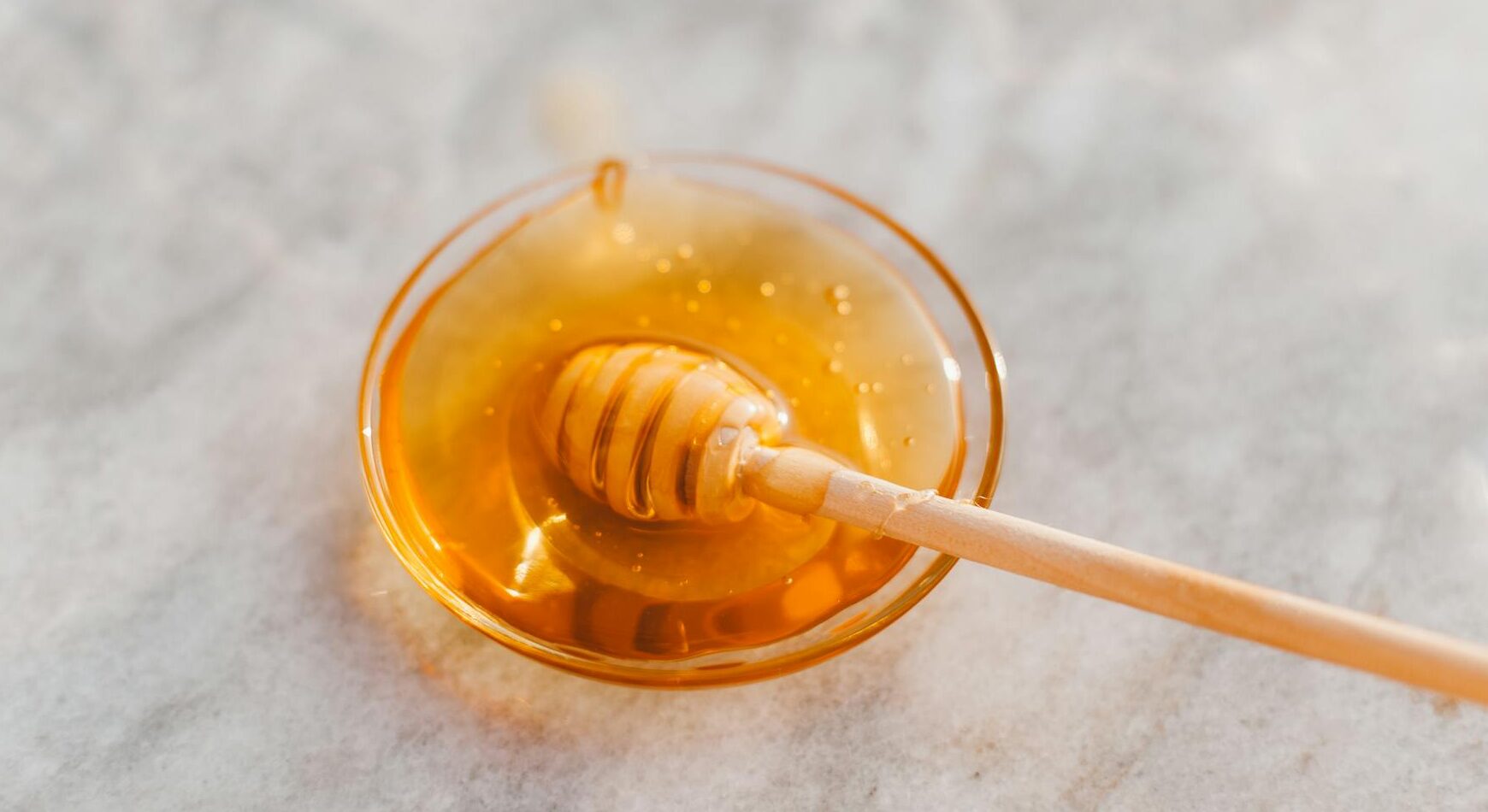When it comes to natural remedies for acne, few ingredients have earned as much attention as Manuka honey. Sourced from the nectar of the Manuka tree (Leptospermum scoparium) native to New Zealand, this golden elixir is far from your typical honey. Packed with unique compounds and therapeutic properties, Manuka honey offers a powerful, skin-loving solution for acne sufferers. Here’s why it stands out:
🧪🦠1. Potent Antibacterial Properties
One of the key components that sets Manuka honey apart is methylglyoxal (MGO)—a compound known for its strong antibacterial effects. Acne is often triggered or worsened by bacteria, particularly Propionibacterium acnes.
Unlike regular honey, which gets most of its antibacterial power from hydrogen peroxide, Manuka honey’s unique selling point is its high Methylglyoxal (MGO) content.
MGO is derived from dihydroxyacetone (DHA), found in the nectar of the Manuka flower, and has been shown to inhibit the growth of a wide range of bacteria, including Staphylococcus aureus and P. acnes, both of which are involved in acne flare-ups. MGO helps kill these bacteria without the harshness of chemical treatments, making it a gentle yet effective option for breakout-prone skin.
A study published in the Journal of Agricultural and Food Chemistry found that MGO levels in Manuka honey can range from 100 mg/kg to over 800 mg/kg, depending on the grade.
🔬2. Biofilm Disruption
One of the reasons acne is so persistent is that bacteria can form biofilms—a slimy matrix that makes them resistant to antibiotics and immune responses. Research published in Microbiology (2011) found that Manuka honey was effective in breaking down biofilms produced by Staphylococcus aureus, a key contributor to infected acne lesions. This suggests that Manuka honey may help where some antibiotics fail—by penetrating and dismantling the protective shield around bacteria.
💧3. Osmotic Effect: Drawing Out Impurities
Manuka honey is highly hygroscopic, meaning it draws moisture toward it. When applied to the skin:
- It helps draw fluid out of pores, which can carry out bacteria, pus, and dirt.
- The low water content also creates a dehydrating environment for microbes, slowing their growth.
🔽4. Low pH That Balances Skin Barrier
Healthy skin has a slightly acidic pH (around 4.5 to 5.5), which helps inhibit acne-causing bacteria. Manuka honey naturally falls in the pH range of 3.2 to 4.5, making it beneficial for:
- Restoring skin barrier function
- Reducing acne inflammation
- Enhancing the effectiveness of other acne treatments that work best in an acidic environment (e.g., salicylic acid)
🌿5. Rich in Antioxidants and Phenolic Compounds
Manuka honey contains a variety of polyphenols, including methyl syringate, leptosin, and caffeic acid, which have antioxidant and anti-inflammatory properties.
- A 2013 study published in Evidence-Based Complementary and Alternative Medicine confirmed Manuka’s high antioxidant profile, which combats oxidative stress—one of the key contributors to skin aging and acne inflammation.
🩹6. Accelerated Re-epithelialization (skin regeneration)
One of the most impressive effects of Manuka honey is its ability to speed up skin repair, particularly through a process called re-epithelialization (the regrowth of new skin cells over a wound or damaged area to restore the skin’s protective barrier).
- Studies have shown that Manuka honey stimulates keratinocyte migration (the movement of skin cells to cover wounds) and boosts fibroblast activity, both of which are essential for healing acne lesions.
- This means not only quicker resolution of active breakouts but also a lower risk of scarring and post-inflammatory hyperpigmentation.
🧴7. Natural Antiseptic Action from Enzymes and Hydrogen Peroxide
In addition to its MGO content, Manuka honey contains an enzyme called glucose oxidase, which produces small amounts of hydrogen peroxide—a powerful antiseptic. This helps to gently cleanse the . skin by fighting bacteria and reducing the risk of infection.
⚖️8. Balances the Skin Microbiome
The skin’s microbiome plays a key role in maintaining healthy skin, and imbalances in this microbiome can contribute to acne outbreaks. Manuka honey has been shown to balance the skin’s microbiome by reducing the presence of acne-causing bacteria like P. acnes while maintaining beneficial bacteria. A study published in Microorganisms (2019) found that Manuka honey exhibits prebiotic effects, promoting the growth of good bacteria and creating an inhospitable environment for harmful microbes.
🌟9. Natural Exfoliation and Brightening
The natural enzymes in Manuka honey provide a gentle form of exfoliation, helping to remove dead skin cells and clear clogged pores—one of the primary causes of acne. A study in the Journal of Dermatological Science (2015) found that honey, including Manuka, has a mild keratolytic effect, meaning it aids in the shedding of the outer layer of skin, which can help prevent future breakouts. Additionally, it helps fade dark spots and post-acne marks, promoting a brighter and more even complexion.
Further reading:
Citations:
Majtan, J., et al. “Methylglyoxal in Manuka Honey—Correlation with Antibacterial Properties.” Czech Journal of Food Sciences 27, no. Special Issue 1 (2009): S163–S165. https://doi.org/10.17221/911-CJFS.
Atrott, J., and T. Henle. “Methylglyoxal in Manuka Honey—Correlation with Antibacterial Properties.” Czech Journal of Food Sciences 27, no. Special Issue 1 (2009): S163–S165. https://doi.org/10.17221/911-CJFS.
Lane, J. A., et al. “Oligosaccharides Isolated from MGO™ Manuka Honey Inhibit the Adhesion of Pseudomonas aeruginosa, Escherichia coli O157:H7, and Staphylococcus aureus to Human HT-29 Cells.” Foods 8, no. 10 (2019): 446. https://doi.org/10.3390/foods8100446.
Images:
Grey Geezer, CC BY-SA 4.0 https://creativecommons.org/licenses/by-sa/4.0, via Wikimedia Commons


